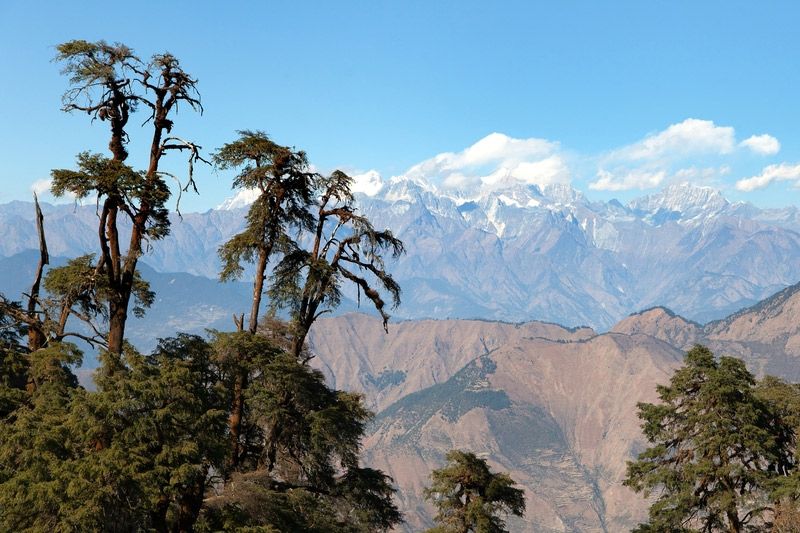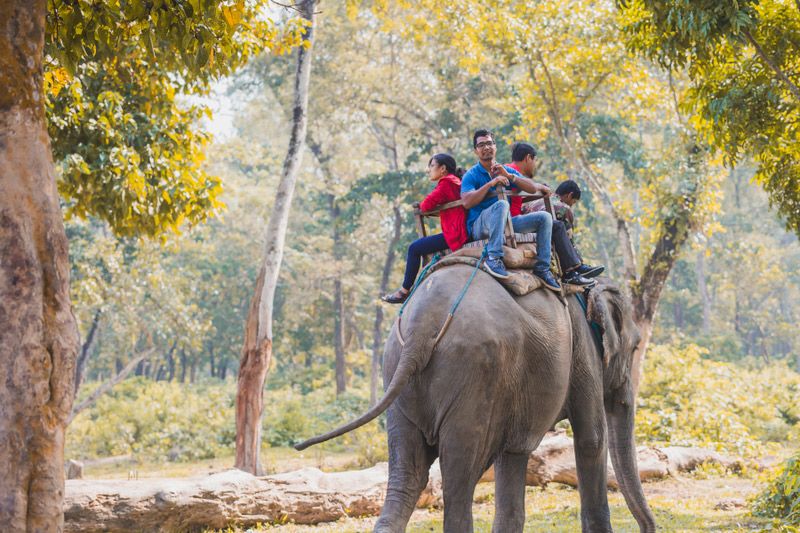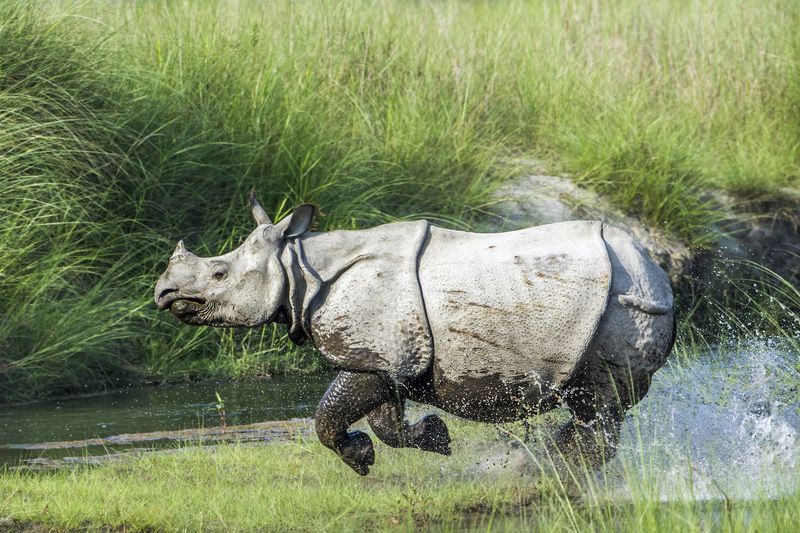Chitwan Wildlife Safari
Trip Overview of Chitwan Wildlife Safari
The park is situated in south central Nepal, covering 932 km2in the subtropical lowlands of the inner Terai. The area comprising the Tikauli forest-from Rapti river to the foothills of the Mahabharat-extending over an area of 175 km2 was declared Mahendra Mriga Kunj (Mahendra Deer Park) by the late King Mahendra in 1959. In 1963, the area south of Rapti River was demarcated as a rhinoceros sanctuary. The area was gazetted as the country’s first national park in 1973, recognizing its unique ecosystems of international significance. UNESCO declared RCNP a World Heritage Site in 1984,In 1996 an area of 750 km2 surrounding the park was declared a buffer zone, which consists of forests and private lands including cultivated lands.
The park consists of a diversity of ecosystems-including the Churia hills, Ox-bow lakes, and the flood plains of the Rapti, Reu and Narayani Rivers. The Churia hills rise slowly towards the east from 150 m. to more than 800 m. The western portion of the park is comprised of the lower but more
rugged Someshwor hill. The park shares its eastern boundary with the Parsa Wildlife Reserve.Climate
The park has a range of climatic seasons each offering a unique experience. October through February with average temperatures of 25oc offer an enjoyable climate. From March to June temperatures can reach as high as 43oC, The hot humid days give way to the monsoon season that typically lasts from late June until September, Rivers become flooded and roads are impossible.
In late January, local villagers are allowed to cut thatch grasses to meet their needs, which offers a better viewing of wildlife to visitors. September ,November , February and April, migratory birds join the residential birds and create spectacular bird watching opportunities. While the monsoon rains bring lush vegetation, most trees flower in late winter. The palash tree, known as the “flame of the forest’ and silk cotton tree have spectacular crimson flowers that can be seen from a distance.
Flora & Fauna
The Chitwan valley consists of tropical and subtropical forests. Sal forests cover 70 percent of the park. Sal leaves are used locally for plates in festivals and religious offerings.Grasslands cover 20 percent of the park. There are more than 50 different types of grasses, including the elephant grass (Saccharum spp ), renowned for its immense height. It can grow up to 8m in height. The park is home to more than 50 mammal species, over 525 birds, and 55 amphibians and reptiles. The endangered fauna found in the park are: One-horned rhinoceros, Gaur. Royal Bengal tiger. Wild elephant, Fourhorned antelope, Pangolin, Golden monitor lizard, Python, etc. Bengal florican. Lesser florican, Giant hornbill, Black stork, While stork, etc.
Facilities
The display at the visitor centre at Sauraha provides fascinating information on wildlife and conservation program. The women’s user groups’ souvenir shop offers a variety of handicrafts and other local products for gifts and souvenirs.
Elephant safari provides opportunity to get a closer view of the endangered one-horned rhinoceros. One may also get a glimpse of the elusive Bengal tiger. The Elephant Breeding Center at Khorsor, Sauraha gives you information on captive elephant and the calves born there.
The museum at Kasara, the park headquarters, has informative displays- Near the HQ visitors can see Bikram Baba, a Hindu religious site of archival value. A short walk (1km) from the park HQ will take you to the Gharial Breeding Center, which is also home to the Marsh mugger and number of turtles.
Inside the park, there are 7 resorts run by park concessionaires that can provide lodging and access to wildlife activities. Various resorts and lodges situated outside the park also offer variety of services.
How to get there
Public buses, tourist coaches, and airlines service link Chitwan. There are nine entrance gates to the park
1. Kasara via Jagatpur ,
2. Ghatgain via Patihani ,
3. Bhimle via Maghauli,
4. Khagendra mali via Bhandara ,
5. Sunachuri via Sunachuri ,
6. Sauraha via Tandi (Ratna Nagar),
7. Laukhani via Pragatinaggr ,
8. Amaltari via Danda ,
9. Kujauli via Rajahar
Detail itinerary of Chitwan Wildlife Safari
-
DAY 01
KATHMANDU - ROYAL CHITWAN NATIONAL PARK
Drive to Chitwan National Park upon arrival, lunch will be served, rooms assigned and there will be a short briefing on the program and our facilities. 4:00 PM: Elephant-back safari: Guests will ride on an elephant to explore the jungle and wildlife. You will be able to see the one-horned rhinoceros, several types of deer, monkeys, wild boar, bison, sloth bear, leopard and, if lucky, the Royal Bengal tiger. This exciting ride lasts for 2-3 hours. 7:00 PM: Dinner in the central dining hall.
-
DAY 02
ROYAL CHITWAN NATIONAL PARK
5:30 AM: Wake-up call followed by tea or coffee, then proceed on a Nature Walk. This encounter on foot with the environment will introduce the main features of eastern Chitwan. Sal forest, open grassland and reverie jungle. Our guides will help you identify some species of birds, plants and other wildlife that you may encounter. 8:30 AM: Breakfast 9:30 AM: Elephant briefing programmed: Learn more about these fascinating animals during a visit to our elephant stables. For the brave ones there is even a crash course in riding and leading the elephants) 1.00 PM: Lunch Remaining hours before the afternoon program: take a dip in the pool, or relax on your verandah. Hammocks and the library are at your disposal. 4:00 PM: Canoeing :A traditional dug-out canoe takes you on a silent trip down the Rapti river to view aquatic birds and the animals of the river banks. Back to resort through the Jungle. 7:00 PM: Tharu Stick dance: Farmers of the nearby villages will show some of their traditional skills and dances. 8:00 PM: Dinner around the campfire.
-
DAY 03
ROYAL CHITWAN NATIONAL PARK - KATHMANDU
5.30 AM: Bird Watching (or another elephant ride) after early morning tea/coffee. 8.00 AM: Breakfast 9.00 AM: Luggage down and departure at 9.39 AM. to Kathmandu. The actual program for your stay, will be given to you on arrival at Resort camp. The activities are adjusted to the length of your stay, the season and present weather conditions. Naturally, it may not always be possible to follow this schedule to the minute and the circumstances may force us to alter the program at short notice. On safari in the jungle you will be accompanied by expert naturalists who will advise on safety procedures and we request you to respect their judgments at all times. If you wish to stroll in the forest alone, a guide will have to accompany you for your safety.
Cost includes and excludes
Check the cost inclusion and exclucion of Chitwan Wildlife Safari
Service Includes
- Transportation from Kathmandu to Kathmandu by public bus.
- Accommodation with all meals ( breakfast, lunch / dinner) during the trip.
- All wildlife activities and entry fees.
Service Excludes
- Domestic airfares or transportation by private vehicle.
- Hard and soft drinks during the trip.
- Personal exp and tips





